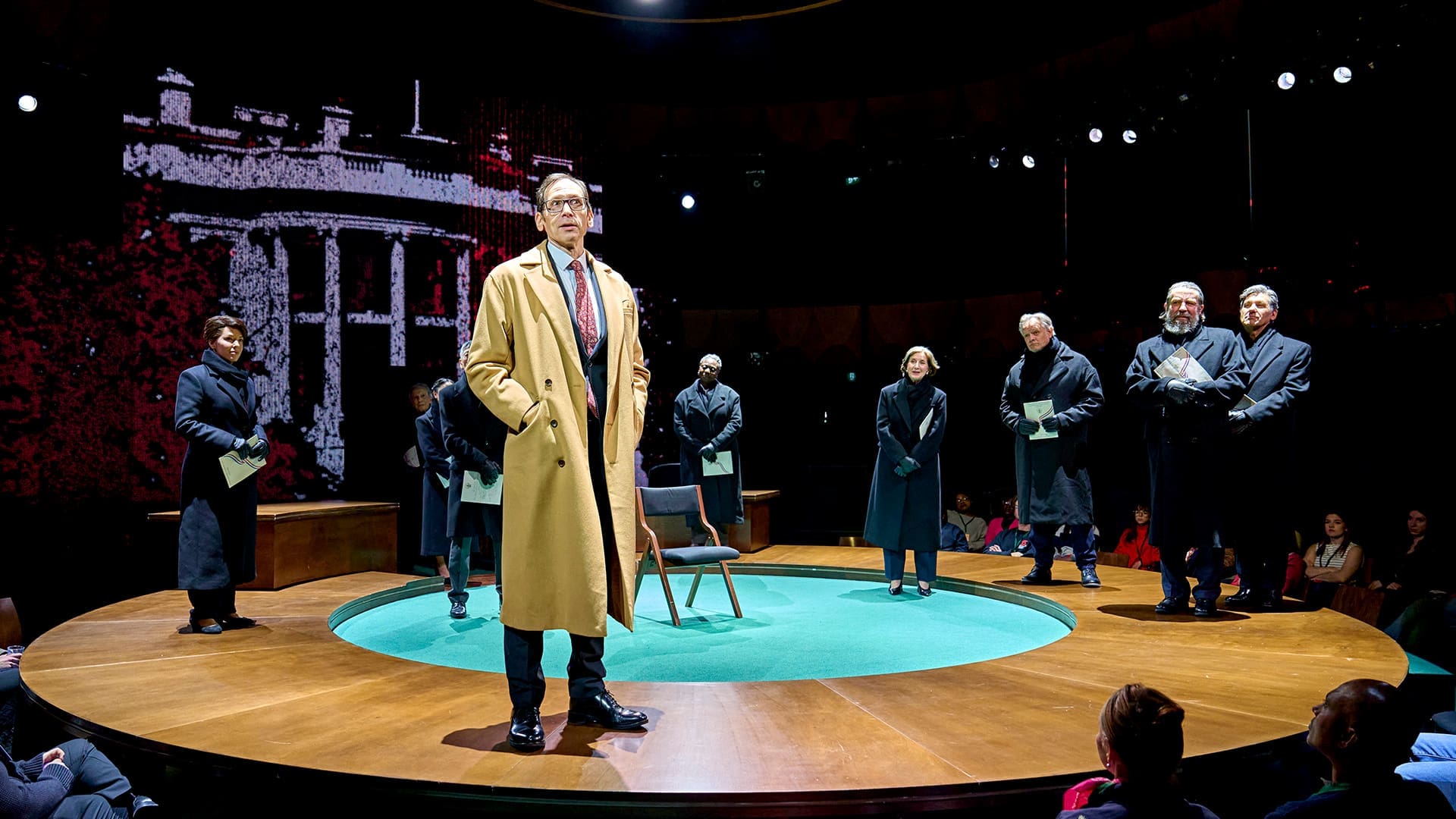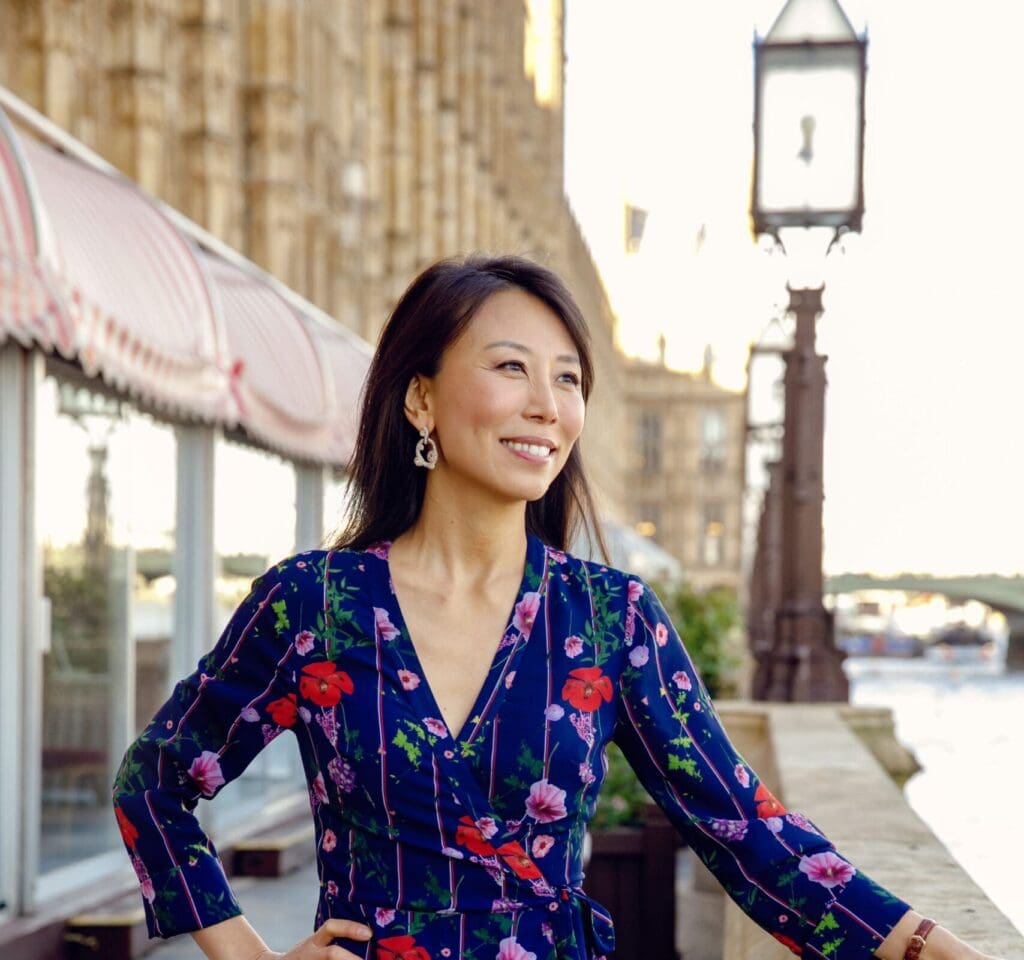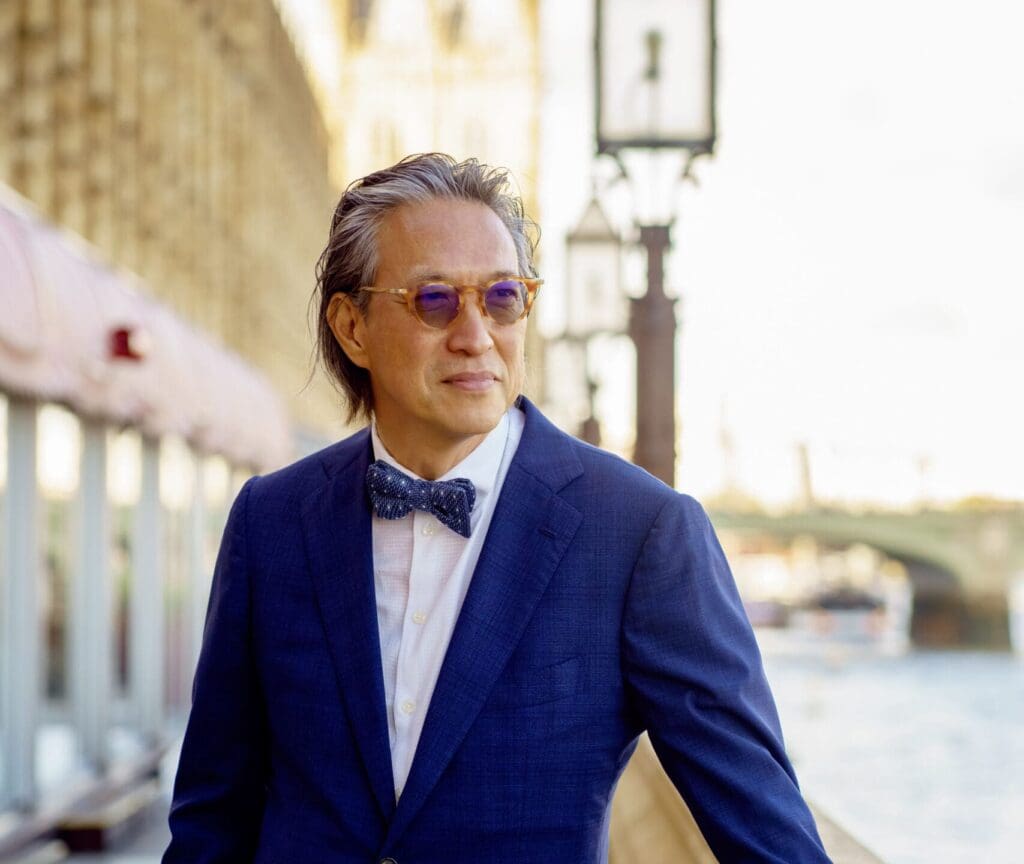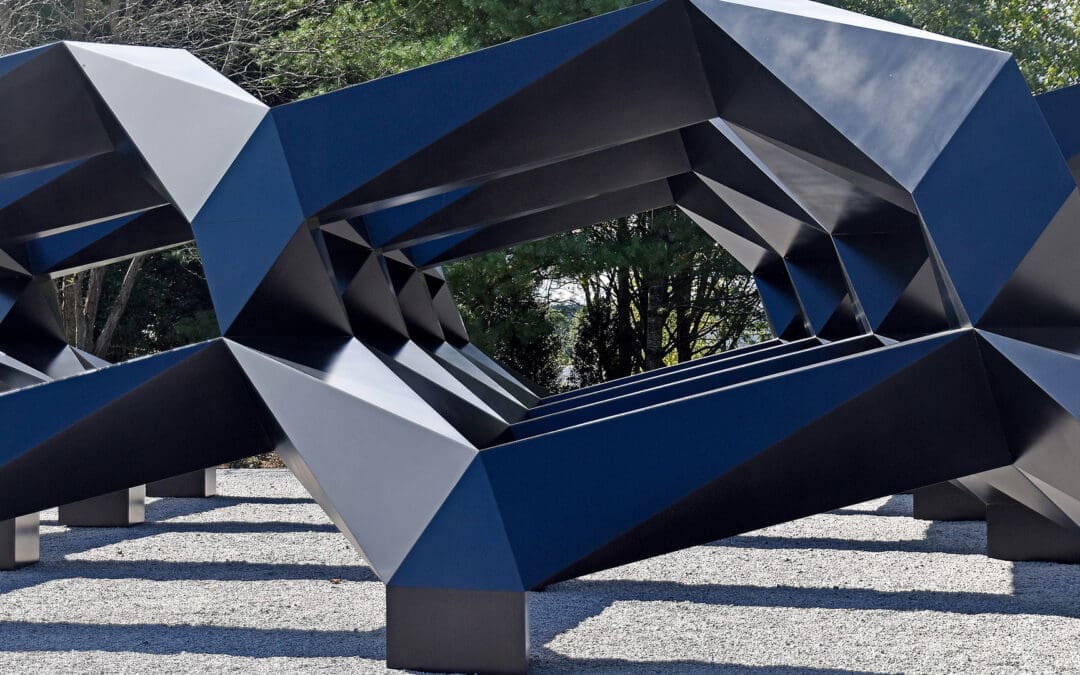W
When we entered the roundabout theatre at @sohoplace in London to witness Kyoto, a new production from the Royal Shakespeare Company and Good Chance Theatre, we did not know what to expect. We came longing for resonance, but in a play about a climate agreement, what would we see? As an artist and a justice advocate, together we carry the burden of perceiving not only what is visible but also what remains invisible: the subtle fractures within systems, the silent laments beneath the surface, the ache of an uncertain future. Yet as Kyoto unfolded, a miracle of theatre opened up, an experience that invited us not into answers but into sacramental questions.
Kyoto is not merely a critique of climate policy, nor a courtroom of moral reckoning. Rather, it subtly figures the fragile and mysterious vessel of human will by dramatizing the 1997 United Nations Climate Summit, where the first legally binding international agreement to reduce greenhouse gas emissions was forged. The play resists simple celebration or condemnation by embracing multiple modes at once—where the tragic and comic, bureaucratic and poetic, cynical and sincere converge like tributaries into an estuary.
It is in this estuary that we encountered a rare kind of theatre: one that seeks not to persuade or to demonize but to behold—tenderly, reverently—the fractures of the past for the sake of the future.
Remnants in the Wreckage
In December 1997, delegates from more than 150 nations gathered in Kyoto, Japan, for the Third Conference of the Parties to the United Nations Framework Convention on Climate Change. From this pivotal summit emerged the Kyoto Protocol, the first international treaty to set legally binding obligations for developed nations to reduce greenhouse gas emissions. The negotiations were fraught, shaped by divergent national interests, power imbalances, and deep skepticism. Yet despite the odds, consensus was reached: developed countries would reduce their emissions to an average of 5 percent below 1990 levels over the 2008–2012 commitment period.
The agreement marked a breakthrough moment: for the first time, nations codified a collective moral and legal responsibility to confront climate change through cooperative global action.
While the practical results of the treaty were uneven—some signatories met their goals, others withdrew, and emissions continued to rise—the Kyoto Protocol marked a moral watershed. It introduced initiatives like emissions trading and the Clean Development Mechanism, laying structural groundwork for future accords like the 2015 Paris Agreement. More significantly, it brought climate change into the arena of binding international law and ethical obligation, signalling that planetary well-being is not only a scientific concern but a deeply human one.
In Kyoto, this historical backdrop becomes more than exposition—it becomes atmosphere, the weather system within which the play unfolds.
The central narrative guide is Don Pearlman, the infamous true-to-life American oil lobbyist known for sowing doubt and undermining progress on the agreement. Here, he is rendered as neither villain nor hero but as sardonic oracle—dressed in white, relaxed and composed, wielding doubt with charm. He is the tempter and the truth-teller, the embodiment of self-interest cloaked in civility. His narration unsettles with its cool intimacy, drawing the audience into late-night negotiations, the coffee-stained bureaucracy of delay, and the quiet cynicism that erodes consensus.
Playwrights Joe Murphy and Joe Robertson, known for The Jungle—an award–winning immersive play about the Calais refugee camp in France that revealed both the anguish and astonishing resilience of displaced people seeking belonging—once again resist caricature, the safety of heroes and villains.
Every delegate is rendered in their full dimension: idealistic, fatigued, torn between national allegiance and moral conscience. The young Angela Merkel, a vulnerable but ambitious envoy, appears with her aides gripping their notes like lifelines—in turbulent diplomatic waters with the fragile possibility of belief that consensus might still be possible.
The precarious hope is given form through the staging itself. Performed in a roundabout theatre—a space where the stage is surrounded by the audience on all sides—Kyoto unfolds as a kind of embodied negotiation. The actors move in concentric motion, circling one another without any single figure in command of the whole. This spatial form resists the hierarchy of a proscenium stage; it invites intimacy, disorientation, and mutual vulnerability. The action is distributed among several vantage points, woven into the eyes and breath of the audience. One becomes aware, viscerally, of the nearness of the other. The centre does not hold—and that is the point.
In Kyoto, the remnant flickers in those who remain at the table, not because they are certain, but because they find themselves on a stage of brief relevance, willing to outlast their own expectations in the quiet tension of those who just keep showing up.
In this rhythmic, turning form, we encountered a theology of the remnant, perhaps not directed by the authors but nevertheless poking through to us. In Scripture, the remnant of a prophetic community is rarely triumphant or glamorous. It is Jesus recruiting disciples from the margins of society to make them “fishers of men.” It is Jeremiah weeping in the ruins of exile. It is the ember still glowing in the ashes of the valley of dry bones. In Kyoto, the remnant flickers in those who remain at the table, not because they are certain, but because they find themselves on a stage of brief relevance, willing to outlast their own expectations in the quiet tension of those who just keep showing up. The rhythm of breath is found in the persistence of presence, just like the prophets in exile: the delegate who returns despite despair, the delegate who speaks poetry amid policy, the delegate of an island nation who speaks of extinction with eloquence, all exhausting their arguments and still showing up the next day. And in Pearlman, it all flickers like an oil lamp, who, despite himself, cannot look away.
The Language of Treaties
Holy dissidence is not always shouted in the streets. Sometimes, it whispers in the stillness of policy rooms or in the courage of unlikely heroes. Other times, it lingers in the refusal to abandon language, even—perhaps especially—when language falters. To be a dissident is to behold the fractures, to refuse to abandon tradition even when tradition betrays us or is pushed aside by progress. Holy dissidence shows up when bureaucratic speech delivered with lyrical force breaks something open, making possible the new. Holy dissidence is what Christians, immersed in the life of the Spirit, can bring to bear on the stage of unknown poets articulating what the church fails to witness in the dying, or birthing, world.
The play’s text oscillates between satire and solemnity, moving like a fugue with counterpoint and echo. Dialogue rises into moments of incantation. Lines repeat. Motions are passed and revised. Acronyms—COP (Conference of the Parties), IPCC (Intergovernmental Panel on Climate Change), AOSIS (the Alliance of Small Island States)—fly like ash. And then—suddenly—an interruption: The chairman takes a nap. A childhood memory surfaces. Someone hums.
Directors Stephen Daldry and Justin Martin allow the production to breathe with the rhythm of a liturgy. The sterile room is framed by visual ruptures—text fragments projected like broken glass, warm lights briefly igniting a delegate’s face in chiaroscuro, echoes of voices in multiple tongues. All of this creates a sense of participation in something sacramental, the setting apart of an ordinary thing to become a vessel of grace.
Even in the midst of (or perhaps because of) strained politics and fragmented translations, the fragments begin to be held still in front of the audience in their rawest forms, and, perceptively, they are offered as moments of a potential discovery. Audibly, as the gifted actors hold up the silence of awkward pauses, the play, somehow, becomes a linguistic whole, gathering the shards of contested hopes. The audience is asked not to judge but to attend—the first gesture of reverence. In Kyoto, we witness a burning bush: thorny, tangled, alive with disagreement and delay, yet not consumed. The heat of impossible divides is real, and yet the fire does not destroy. The stage holds the contradictions without resolving them—and that is where something holy begins.

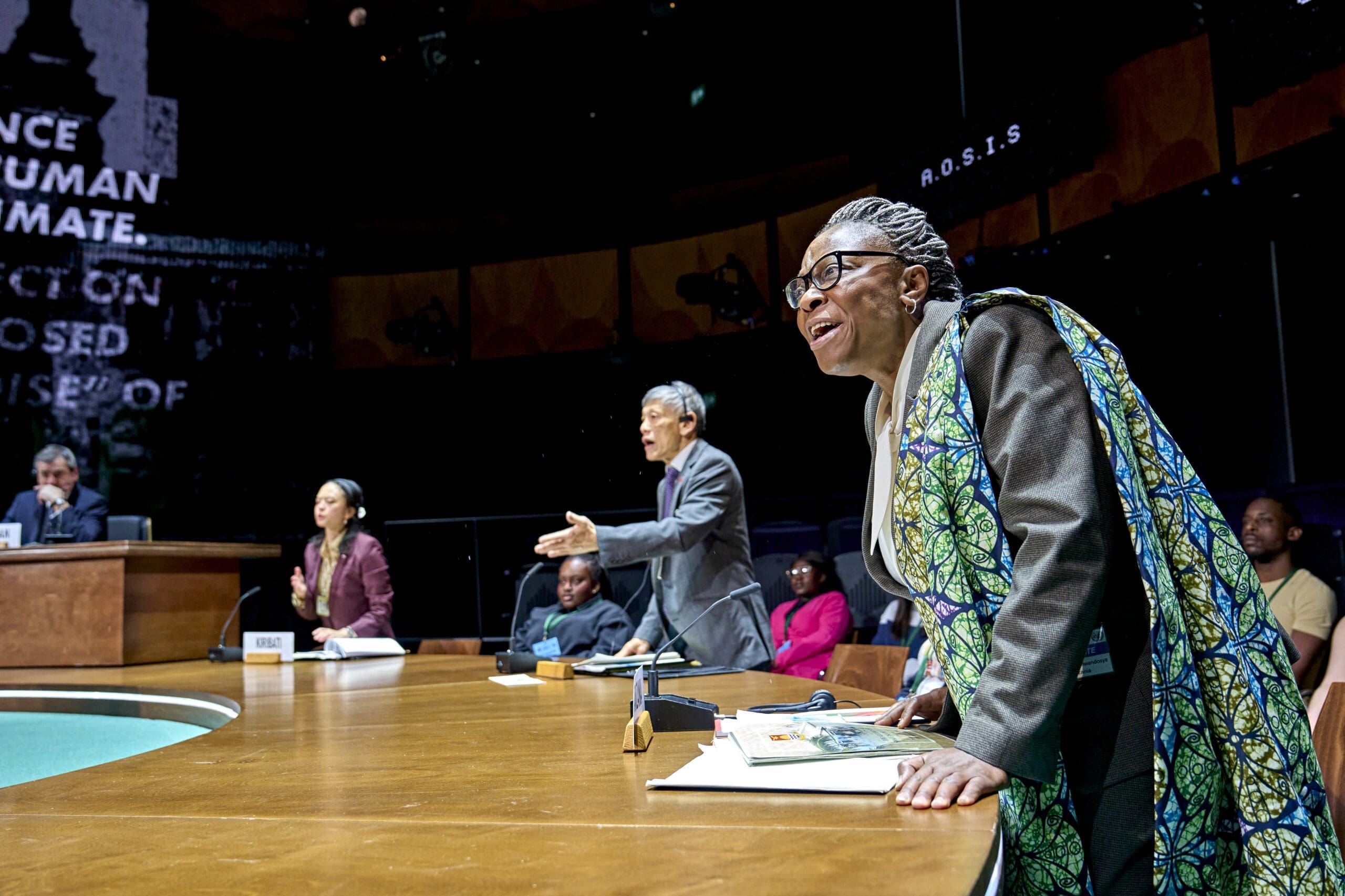
True cultural repair rarely advances through didacticism or moral binaries. Instead, it unfolds in the slow, courageous act of staying. Genuine stewardship of the future does not passively accept what seems inevitable; it is found in the stubborn commitment to seek common ground. As Murphy and Robertson put it in an interview in the Guardian, “How do we stop the defining question of our time being dragged into a wider culture war of disagreement that only benefits a small group of people? We have to conduct our discourse in a more compassionate and productive way.” Kyoto models what it means to remain present inside irresolvable tension. If the treaty was language strained to its limit, the theatre becomes language made flesh—embodied, tender, unfinished.
Play as Repair, Not Distraction
In a world drowning in climate fatigue and culture-war rhetoric, why stage a play about a flawed treaty from decades ago?
Kyoto does not solve a problem; it sustains the moral ecology by preserving the conditions for empathy, awe, and lament. It is a playground for new ways of being, the soil of moral imagination. The theatre carries the sacred task of reminding us that re-membering is still possible. The best art always exposes the fundamental character of the various sides warring against one another, but it does so without dividing them.
This is no small thing. In an age of cultural exhaustion, institutional decay, and algorithmic distraction, Kyoto dares to linger. It whispers that we still need witnesses, that we still need theatres where common language—however fragile—is still possible. We still need beauty, desperately, not as an escape from justice, but as its deepest companion. Not as a sentimental ornament, but as a cornerstone.
Kyoto speaks of climate, yes. But it also forecasts another atmosphere: the interior weather-scape of the soul. Each delegate carries more than policy. They carry inherited trauma, ancestral wounds, private grief. What stalls consensus is not apathy—it is the cost of caring by listening to each other in a fractured world. This invisible freight is what makes consensus so costly—not because people do not care, but because the call to cross perilous storms with shipmates who see the world differently than you do is a daunting one. Hope costs each one in different ways, yet it is costly for all. Hope demands courage and a willing sacrifice.
The play does not resolve this ache. It does not try to. Instead, it dignifies the weight of it. This is a defining feature of culture care: not offering easy answers, but creating space for enlarged questions. Not forcing unity, but cultivating the tenderness of shared longing. As Wendell Berry writes, “for a time / I rest in the grace of the world and am free.”
Art of Visible Fracture
As an artist and a justice advocate, we have long turned to kintsugi—the ancient Korean and Japanese tradition of mending broken ceramics with gold—not only as an aesthetic method but as a somatic theology, a deeper knowledge of God that is not intellectually understood but is accessible through our senses and the act of making. Kintsugi works as a metaphor for redemptive repair that honours what was shattered.
Since founding Academy Kintsugi in response to the global pandemic in 2020, we have seen the idea of kintsugi take off. But what many still overlook is its radical slowness. A kintsugi master will behold the fragments of a broken ceramic for a long period of time, generations in some cases, until the fragment itself is seen as whole. Then the work of repairing the vessel begins, placing the most valuable and extravagant materials of urushi and gold into the cracks of a common bowl. The new design is based on the fractured patterns, the gold transforming what was broken into the landscape of a mended world. Kintsugi is therefore holy dissidence against disposable culture. It is the refusal to throw away what has been wounded.
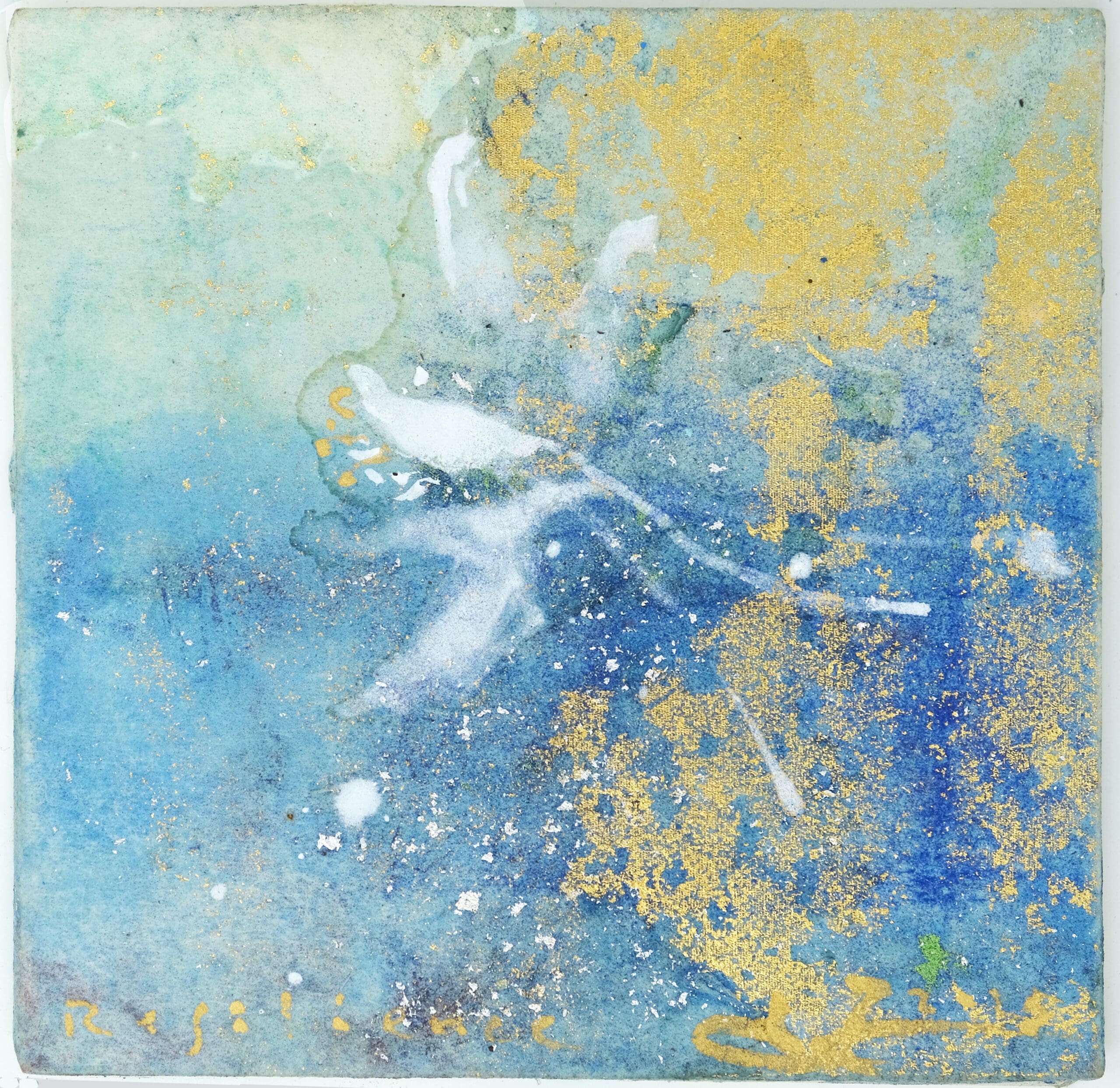
In an authoritarian age full of hidden scars, kintsugi is an underground resistance to violence and dictatorial pressures. It is the resilient legacy of Sen no Rikyū, a tea master of sixteenth-century Japan. Rikyū brought the most beautiful peacemaking movement in the unlikeliest of times: during the Feudal War era, one of the most violent periods of Japanese history. The residue of the Feudal War aggression became a marker of atrocities in Korea and led to the blind nationalisms of the twentieth century. It is in that context of suffering that a daring tea master and his later disciples invoked the beauty of “Korean Art of the Common People” (Minhwa) and developed kintsugi in direct contrast with the beauty of perfection pursued by the dominant powers. Almost all we know to be Japanese aesthetics owes a great deal to Rikyū. What is now commonly known as the wabi-sabi aesthetic came directly out of Rikyū’s enduring legacy, which outlasted the feudal powers. It transfigures what seemed worthless into something precious, treating a broken, common artifact with the highest craftmanship—a legacy for generations.
What Kyoto captures implicitly is the attention to what is worn (wabi) and what is corroded (sabi) in our global dialogue. In an era when consensus on the most urgent issues feels impossible, the art of Kyoto, like kintsugi, gains potency. The art of theatre becomes the art of beholding the impossible tensions long enough for beauty to emerge—before any mending begins. True peacemaking demands more than idealism; it requires a resilient and versatile material for mending. In this light, the traditional lacquer used in kintsugi—urushi, a sap drawn from Japanese poison sumac—offers profound metaphorical resonance. It is dangerous in its raw form, but when carefully and reverently handled, it becomes the most enduring, luminous substance for joining brokenness into a unified whole. Taking on the theme of climate agreement in theatre is akin to taking a poison sumac and creating a beautiful lacquer out of it.
The highest-quality urushi is found in the trees in northern Japanese mountains where the growth is intentionally slow. It is a gift of generational commitment to steward the ecosystem of care, the relationship between the nature and the humanity: only a few ounces of precious sap are taken from an urushi tree each year, and each tree is replanted in a sacred ritual. What most people experience in kintsugi-based stories and workshops is but a sliver of the complex and profound historical resonance that lies beneath Japanese and Korean soils. Great art to culture is what urushi is to kintsugi; it is the invisible glue in our current malaise that allows fragmentary pieces of the past to come together, so that the joints are more flexible and stronger after the mending. But it may take generations of care to get there.
This is the invitation of holy dissidence: to become stewards, not warriors.
In Kyoto, this patience sings. This is not a play about fixing the past. It is about beholding it. It traces the fracture lines—of diplomacy, of trust, of climate stability—and gilds them with attention. Unlike political processes that conceal their scars, Kyoto traces them with care.
Each line of text, each moment of delay in the summit, becomes part of a larger vessel being re-formed. But unlike political resolution, which often seeks to erase the memory of failure, art—true art—honours it. Kyoto becomes a theatre of invisible fracture. It is not a triumphant record of success, but a reliquary of intent. The scar is not hidden. It is a portal—for us, the audience, to act on and create into.
This is the work at hand: to tend to cultural memory not as something to manipulate for power but to steward for healing. To allow beauty to enter even the most wounded conversations—not to decorate, but to transfigure.
Toward a Culture of Stewardship
If diplomacy was the soil of this play Kyoto, and theatre its medium, then the fruit is something rarer: a reimagining of what it means to care. To care not only for the earth but for one another. To care not only for what is urgent but for what is unseen. To care not only through action but through attention.
This is the invitation of holy dissidence: to become stewards, not warriors. To be patient gardeners, not transactional consumers. To make space for wonder, paradox, and sacred imagination. To till the soil of consensus even in a season of drought.
Kyoto shows us how. Not with grand gestures, but with fragile ones. We left the theatre with questions to ruminate: What does it mean to remain when others flee? What does it mean to speak when language fails? What does it mean to mend, not erase?
In these questions, we hear the remnant calling—not as heroes, but as keepers of the flame. Not as the ones who fix the world, but as the ones who refuse to abandon it. This is a play for the toxic culture of our times. For in the end, we are all negotiators of impossible covenants. And unresolved beauty, if we let it, can become our shared tongue.


